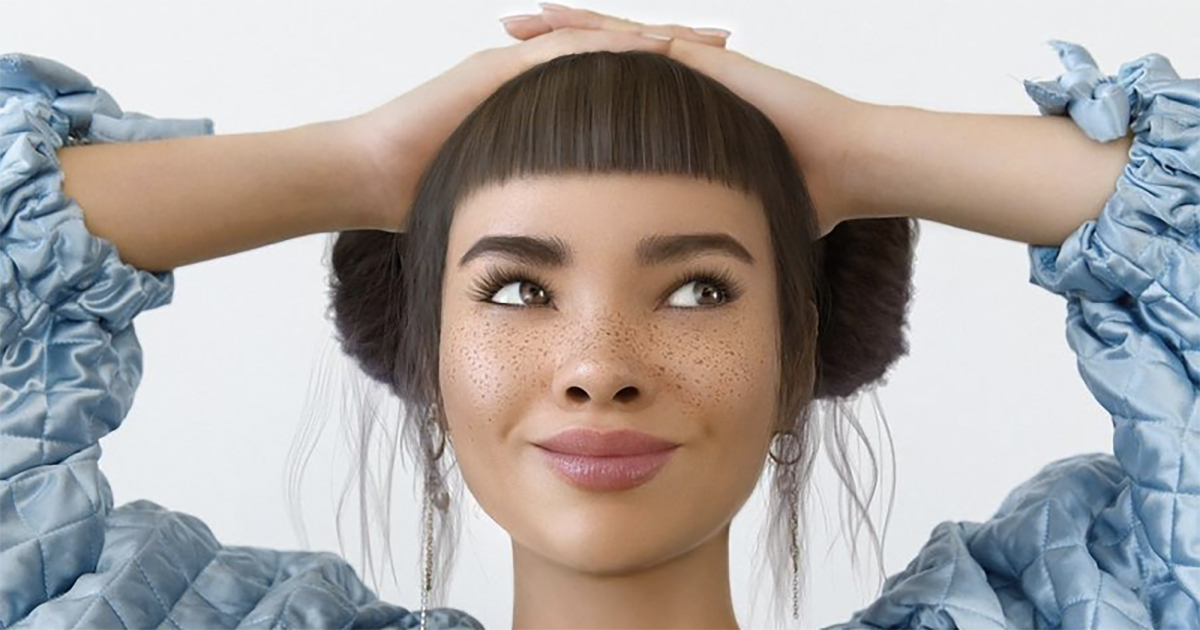
READ MORE: VTubers are making millions on YouTube and Twitch (TechCrunch)
Streamers who use digital avatars, known as vTubers (short for Virtual YouTubers), are part of a growing creative community primed to take the internet by storm.
According to Twitch, vTubing content increased 467% year-over-year in 2021, reports The Drum’s Chris Sutcliffe, and some of them are raking in the cash.
READ MORE: After Tony the Tiger took to Twitch to play games with streamers, we find out more about the growing phenomenon of VTubing. (The Drum)
Mori Calliope (2 million subscribers), accurately described by TechCrunch’s Amanda Silberling as “a red-eyed rebel with pastel pink hair, a black crown and veil,” made $854,595 in 2021 according to analytics site Playboard. This was from superchats (a YouTube livestream monetization feature) alone, making her the seventh-most superchatted YouTuber in the world.

Who were the six streamers who out-earned Calliope’s superchats? They were all vTubers, of course.
Many of the most popular vTubers are created or managed by agencies like Hololive, Nijisanji and VShojo.
Hololive has 71 active streamer accounts with more than 64 million subscribers on YouTube. vTuber Gawr Gura is the most subscribed vTuber worldwide, boasting more than 4 million subscribers.
READ MORE: Takanashi Kiara opens up on Hololive fans “recognizing” her during Korea trip (Dexerto)
vTuber avatars usually resemble anime characters since the genre first emerged in Japan.
Many credit Kizuna AI, a project of Japanese tech company Activ8, who started her channel in 2016 and coined the term “vTuber.”
vTubers thrived for years in Japan, but the genre turned heads around the world during the pandemic.
To build their virtual personas, streamers use motion capture or even just AR face-tracking technology to embody a virtual avatar and weave a backstory and mythos around the character.
READ MORE: Apple delivers big updates to its augmented reality platform (TechCrunch)
“I thought it would be really fun to be another character,” vTuber Youna Kang, better known by her online persona CodeMiko, told Silberling. CodeMiko has almost a million followers on Twitch.
“I wanted to take control of a virtual character and have the audience be able to interact with her live on stream. I’m a big fan of Ready Player One, so when I felt like I could make a tiny percent of it, I was really excited.”

vTubers really are one of the pieces of the metaverse puzzle that will eventually turn the spatial internet into the Oasis from Ready Player One.
Kang was a VR animator before she was laid off in the pandemic and created CodeMiko — which is now her full-time job. Her avatar is far more realistic than most vTubers but the barriers to entry are low meaning pretty much anyone could create and stream in the body of avatar.
“vTubers exist in this space between anime character and real person. But they can explore original ideas or get away with things that other people can’t who exist in the same space.”
— Gigguk
Wired’s Jenny Zheng talked to a vTuber who only started streaming in January. She created her 3D character model, Kyrie Overdrive, with free software called VRoid, and then refined the character over several months testing different assets from Booth.pm.
At Booth.pm you can buy virtual clothes and swap outfits. It also offers off-the-shelf models that anyone can buy and use.
While a cheap and easy entry, it means your model won’t be unique, and other users who purchased the model can also stream with it. However, you can further edit the model with a 3D modeling software like Blender or more advanced professional media tools from Adobe.
The hardware costs for streaming need not be expensive either.
If you’re already a gamer and can play AAA modern-day games on your PC, your specs are more than enough, reports Wired.
For example, Overdrive’s PC specs include an Nvidia GeForce GTX 1070 graphics card, an Intel Core i7 CPU, and 16GB of RAM. In addition to a PC, you’ll need a webcam and software for facial tracking so your model’s facial expression can reflect yours.
Others recommend the free facial tracking software VSeeFace and a standard webcam. Overdrive estimates that in total, she’s spent around $200 to $300 to get started, which includes the webcam, a ring light, and peripherals like a shield for her mic. An addition might be a hand-tracking device like Leap Motion.
“Even for vTubers who only connect with audiences through their avatars, the phenomenon is ultimately about the human connection.”
— Amanda Silberling, TechCrunch
Hardware aside, the other element to being a successful vTuber is personality. That may seem strange given that so much of this activity is likely being driven by an algorithm, but it seems that authenticity — that necessary characteristic of content creation on social media — remains crucial even behind a mask.
“People get into vTubing before they even do a test stream,” Overdrive cautions. “I’ve seen a lot of people plonk down the hundreds and thousands of USD for a full model and rig setup, only to stop streaming two months later because they realized they didn’t like streaming, or burned out quickly.”
Jams, another vTuber who spoke to Zheng, agrees: “Way more important than having the best looking avatar with the most physics and decorations is first asking why you want to pursue vTubing, and then digging deep in yourself and finding what’s unique and interesting about you that you want to share with the world.”
READ MORE: Anyone Can Be a VTuber. Here’s How to Get Started (Wired)
CRUSHING IT IN THE CREATOR ECONOMY:
The cultural impact a creator has is already surpassing that of traditional media, but there’s still a stark imbalance of power between proprietary platforms and the creators who use them. Discover what it takes to stay ahead of the game with these fresh insights hand-picked from the NAB Amplify archives:
- The Developer’s Role in Building the Creator Economy Is More Important Than You Think
- How Social Platforms Are Attempting to Co-Opt the Creator Economy
- Now There’s a Creator Economy for Enterprise
- The Creator Economy Is in Crisis. Now Let’s Fix It. | Source: Li Jin
- Is the Creator Economy Really a Democratic Utopia Realized?
Not surprisingly, there’s a growing community of trans vTubers, reports Silberling. Some of whom say that adopting an avatar has helped them navigate gender dysphoria. vTubers can show another side of themselves onscreen.
“I don’t get the same amount of bad treatment online as my female coworkers do,” Kang told Silberling. “It’s harder to troll somebody that’s a cartoon.”
“[vTubers] exist in this space between anime character and real person,” anime YouTuber Gigguk says in the video below. “But they can explore original ideas or get away with things that other people can’t who exist in the same space.”
vTuber Ironmouse, for example, is the most-subscribed female streamer on Twitch. Silberling notes that “in real life, the Puerto Rican gamer is chronically ill and sometimes bed-ridden, so vTubing helps her have fun and socialize, especially when isolating from the coronavirus.”
READ MORE: VTuber Ironmouse is now the most subbed female Twitch streamer ever (Dot Esports)
SOCIAL MEDIA, WEB3, AND HUMANITY’S DIGITAL FUTURE:
Technology and societal trends are changing the internet. Concerns over data privacy, misinformation and content moderation are happening in tandem with excitement about Web3 and blockchain possibilities. Learn more about the tech and trends driving humanity’s digital future with these hand-curated articles from the NAB Amplify archives:
- The TikTok-ing of Western Civilization
- Web3 and the Battle for the Soul of the Internet
- Our Collective (and Codependent) Relationship with Data
- Want to Fix Social Media? Stop Listening to the Bots and Algos
- Social Media Is a Disaster for Democracy, But Who’s Going to Change It?
Brands have caught on.
Netflix, SEGA and AirAsia have all used vTubers in their marketing. Kellogg’s has updated its Tony the Tiger mascot into a 3D avatar, which debuted last month on Twitch.

Authenticity remains key, however, which is why there’s been some backlash against the Tony the Tiger activation and against Calvin Klein, which partnered with Lil Miquela, a completely fictional Instagram influencer which is operated by a VC company called Brud.
“Even for vTubers who only connect with audiences through their avatars, the phenomenon is ultimately about the human connection,” Silberling says. “After all, there’s still a real human behind those big anime eyes — even if you’ll never see their face.”
AI Can Solve the “Personality Problem”
Avatars are also helping content creators scale their business. One of them is Dutch creator Jordi van den Bussche, who amassed 15 million YouTube subscribers to his gaming channel. Struggling to keep on top of constant demands for fresh content and with his mental health suffering, he invented a blue-haired vTuber called Bloo. Bloo now has his own YouTube channel, and he just got a second one, too.
As explained by Tubefilter’s Sam Gutelle, who spoke with van den Bussche, the creator envisions a world in which platforms like YouTube are dominated by vTubers.
By creating a “virtual avatar,” van den Bussche is able “to run a personality-based channel that is not focused around me.”
Like other vTubers, Bloo is controlled by motion capture software, which maps the movements of a real-life human onto the digital avatar. And thanks to voice cloning software, anyone can step to be Bloo. Three different people have performed the character so far, though van den Bussche noted that he himself isn’t one of them.
A vTuber persona, van den Bussche explains, can always be molded to meet the needs of an audience. That quality also makes vTubers great partners for brands, and Bloo has already uploaded plenty of sponsored videos.
“vTubers will rule the future because you can run 100 channels,” he said.




Discussion
Responses (1)